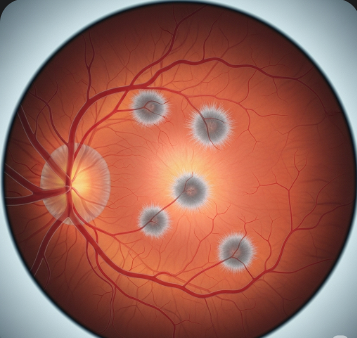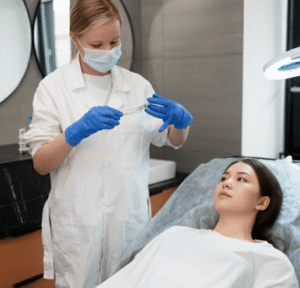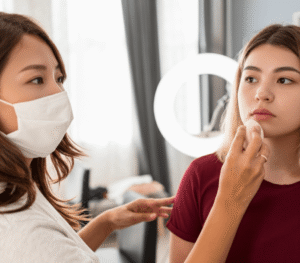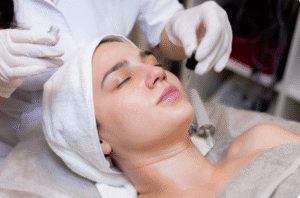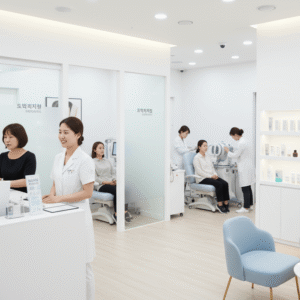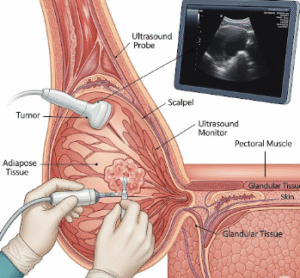Overview
Cotton wool spots are small, white or grayish patches on the retina, visible during an eye examination. They represent areas of microinfarction caused by interrupted blood flow to the nerve fiber layer of the retina. While often asymptomatic, they are important markers of underlying systemic or ocular disease.
In South Korea, ophthalmology clinics and retinal specialists provide advanced evaluation, diagnosis, and treatment for cotton wool spots, integrating fundoscopy, imaging techniques, and systemic disease management to prevent vision complications.
Key Facts
Highlights:
➡️ Cotton wool spots are usually detected during routine eye exams and may not cause immediate vision problems.
➡️ They indicate retinal microvascular damage, often associated with diabetes, hypertension, or vascular occlusive diseases.
➡️ Can be single or multiple, scattered across the retina.
➡️ Their presence warrants thorough systemic evaluation to identify and manage underlying health conditions.
➡️ South Korea offers state-of-the-art retinal imaging and systemic care to address the root causes and prevent progression.
What is Cotton Wool Spots?
Cotton wool spots are retinal lesions appearing as fluffy white patches on the retina, caused by accumulation of axoplasmic material due to ischemia of the nerve fiber layer.
Key characteristics:
- Appearance: Soft, white, cloud-like patches, sometimes with indistinct borders
- Location: Typically along the superior or inferior temporal arcades of the retina
- Associated Signs: May coexist with retinal hemorrhages, microaneurysms, or hard exudates
- Duration: Usually resolve over weeks to months, but recurrence depends on underlying disease
Cotton wool spots themselves do not cause vision loss, but they are indicators of significant systemic or ocular pathology.
What Symptoms are Related to Cotton Wool Spots?
Although often asymptomatic, cotton wool spots may be associated with:
- Blurred or impaired vision in severe cases
- Floaters or visual disturbances if retinal hemorrhages accompany the spots
- Underlying systemic symptoms like high blood pressure, fatigue, or dizziness (related to systemic disease)
- Eye discomfort or dryness in some patients
Highlights:
➡️ Most patients do not notice cotton wool spots until detected on retinal examination.
➡️ Visual changes indicate more advanced or coexisting retinal disease.
➡️ Early detection allows timely management of systemic conditions to prevent ocular and systemic complications.
What Causes / Possible Causes of Cotton Wool Spots?
Highlights:
➡️ Diabetic Retinopathy: Chronic high blood sugar damages retinal microvasculature, leading to cotton wool spots.
➡️ Hypertensive Retinopathy: Elevated blood pressure causes retinal ischemia and microinfarctions.
➡️ Retinal Vein Occlusion: Blockage of retinal veins can result in localized retinal ischemia.
➡️ Infections and Inflammatory Diseases: HIV, lupus, or other systemic inflammatory conditions can contribute.
➡️ Blood Disorders: Anemia, leukemia, or other hematologic conditions may impair retinal perfusion.
➡️ Mechanism: Cotton wool spots develop due to ischemic injury to the retinal nerve fiber layer, resulting in accumulation of intracellular debris that appears as white patches on fundoscopy.
When Should I See My Doctor?
Highlights:
➡️ If cotton wool spots are detected during an eye exam, a full systemic evaluation is necessary to rule out underlying diseases.
➡️ If accompanied by visual disturbances such as blurred vision, floaters, or scotomas, prompt ophthalmology consultation is required.
➡️ For patients with diabetes or hypertension, regular retinal examinations are crucial to prevent progression of retinopathy.
➡️ If systemic symptoms like high blood pressure, fatigue, or unusual bruising are present, further medical assessment is essential.
➡️ Early consultation ensures early intervention, proper management, and prevention of irreversible vision damage.
Care and Treatment
Management focuses on treating the underlying cause and monitoring ocular health:
Highlights:
➡️ Systemic Disease Control:
- Blood sugar management for diabetic patients
- Blood pressure regulation for hypertensive patients
- Treatment of blood disorders or inflammatory conditions
➡️ Ophthalmic Monitoring:
- Regular retinal examinations with fundoscopy or fundus photography
- Optical coherence tomography (OCT) to assess retinal layers
- Fluorescein angiography for detailed vascular evaluation
➡️ Lifestyle Measures:
- Healthy diet and exercise to support vascular health
- Smoking cessation to reduce vascular risk
- Regular follow-up to monitor disease progression
➡️ Medications:
- Anti-VEGF injections for diabetic macular edema if coexisting with cotton wool spots
- Anti-hypertensive therapy for hypertensive retinopathy
➡️ Surgical Intervention: Rarely required unless complications like retinal vein occlusion or severe macular edema develop.
Treatment Options in Korea
South Korea provides advanced care for cotton wool spots, including:
Highlights:
➡️ Retinal Clinics: High-resolution imaging and comprehensive fundoscopy to detect and monitor cotton wool spots.
➡️ Systemic Disease Management: Endocrinologists and cardiologists collaborate for diabetes, hypertension, and vascular disorders.
➡️ Multidisciplinary Care: Ophthalmologists, internists, and hematologists work together to address underlying causes.
➡️ Advanced Therapeutics: Anti-VEGF therapy, laser treatments, and minimally invasive procedures for complications.
➡️ Medical Tourism Support: Multilingual consultations, personalized diagnostic plans, and coordinated treatment for international patients.
➡️ Preventive Care: Lifestyle guidance, regular monitoring, and early intervention to reduce recurrence and protect vision.

